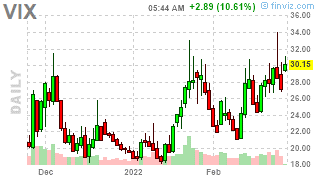The Russian invasion of Ukraine has produced a climate of anxiety around global supply disruptions. Don’t expect it to abate just yet.
After witnessing crude oil prices slipping on Friday (Feb. 25) – as some major players sold off their positions before the weekend, which was still marked by a context of uncertainty regarding the evolution of the current Ukraine-Russia conflict – lots of concerns remain over potential global supply disruptions from a strengthening set of sanctions on major crude exporting country Russia.
The sanction that is likely to impact the Russian bear the most in the long term was taken by Taiwan on the weekend (under rising pressure from the West) to block the sales of electronic microchips to the Russian Federation.
OPEC+ will meet this Wednesday (Mar. 2) during a surge in the two black gold benchmarks, with little hope, however, that their action will dissipate the feverishness of the energy markets.
British oil giant BP’s shares fell by nearly 7% this morning on the London Stock Exchange, the day after the announcement of its divestiture from the Russian giant Rosneft, in which it held a 19.75% stake.
Technically, the sturdiest support seems to be located around the $93.36-95.01 area for Brent and the $89.54-90.45 area for the West Texas Intermediate (WTI), as we recently saw some bulls entering long trades around those levels. We could see prices rebounding onto these support zones one more time as volatility stays high.

VIX (aka “Fear Index”) – currently trading around 30 – could spike again depending on how the situation progresses.
